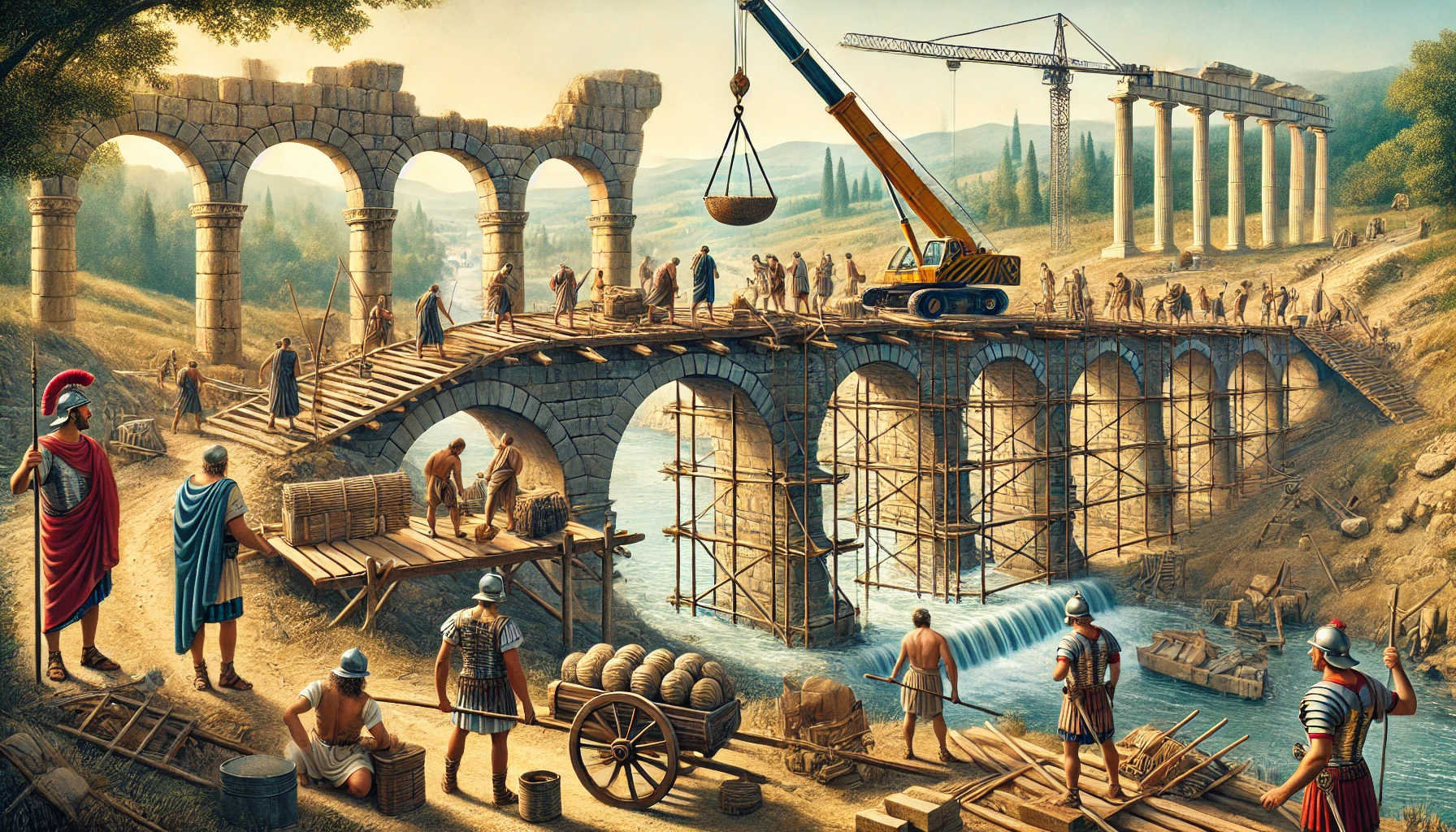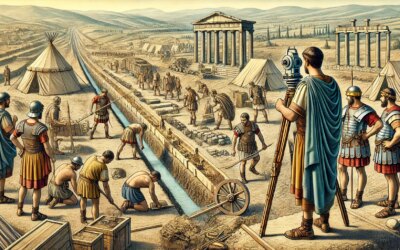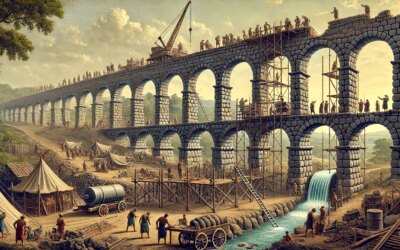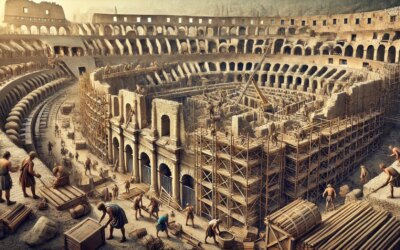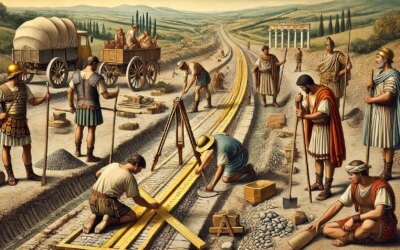Crossing Water, Building Power
With the roar of hammers and the creak of wooden cranes, Roman engineers in the 1st century AD transformed the landscapes of the empire. Over rivers and ravines, they constructed the stone arteries of Roman control—bridges that carried legions, merchants, and messages. From the banks of the Tiber to the farthest reaches of Britannia, these structures embodied the ambition and precision of a civilization determined to master nature through architecture.
The Role of Bridges in Roman Infrastructure
Bridges were essential to Rome’s expansive road network, which extended over 400,000 kilometers at its peak. Rivers, valleys, and wetlands posed obstacles to movement and logistics. Roman bridges—whether temporary military pontoon structures or permanent stone crossings—allowed the empire to maintain fluid communication, rapid troop deployment, and robust trade.
Bridges were not just functional. They symbolized imperial dominance. Inscribed with dedications and adorned with statuary, they demonstrated the power of Roman engineering and the emperor’s generosity.
Engineering Expertise: Materials and Design
Roman bridges varied in complexity and material, depending on geography and available resources. Key elements included:
- Stone arches: The hallmark of Roman bridge design, distributing weight evenly and ensuring stability
- Concrete (opus caementicium): A Roman innovation that allowed for durable underwater foundations
- Wooden scaffolding and cranes: Used during construction to position stones and support frameworks
- Piles and cofferdams: Techniques for building piers in rivers, keeping water out of work areas
Roman engineers employed keystone-based arch systems, enabling bridges to span wide distances with remarkable strength. The use of voussoirs—wedge-shaped stones—ensured compression stability. Many bridges also featured cutwaters—pointed pier bases to deflect current and reduce erosion.
Famous Examples of Roman Bridges
Several Roman bridges from the 1st century AD remain standing or partially preserved today:
- Pons Fabricius (Rome, 62 BC): The oldest Roman bridge still in use, connecting Tiber Island to the city
- Puente de Alcántara (Spain, AD 106): Built under Emperor Trajan, a masterpiece of symmetry and inscription
- Pont du Gard (France, 1st century AD): An aqueduct bridge combining water transport and pedestrian access
- Bridge of Augustus at Narni (Italy): Though ruined, it was one of the longest spans of its time
These structures illustrate Rome’s ability to blend form, function, and endurance.
The Roman Military and Temporary Bridges
Military campaigns required rapid bridge construction. The Roman army, trained in engineering, could assemble timber pontoon bridges across rivers like the Rhine. Julius Caesar famously built two such bridges during his Gallic campaigns in 55 and 53 BC, stunning both enemies and allies with their speed and strength.
These temporary bridges were built with piles driven into the riverbed, connected by wooden decking, and often dismantled after use to prevent enemy passage.
The Builders: Engineers and Laborers
Bridge construction was overseen by military engineers (architecti and mensores), often part of the legions. These specialists used surveying tools like the chorobates and groma to plan alignments and slopes.
Labor was provided by soldiers, slaves, and local workers. In many provinces, bridge-building projects served both military and economic purposes—employing locals, integrating territories, and fostering loyalty through improved infrastructure.
Inscriptions and Dedications
Many bridges bore inscriptions naming the emperor or local governor who funded or commissioned the project. These messages often emphasized the beneficence of Roman rule and the unity of the provinces.
For example, the Alcántara Bridge in Hispania proclaims: “To the Emperor Caesar Trajan, best and greatest, Germanicus.” Such inscriptions reinforced the connection between architecture and imperial propaganda.
Challenges of Maintenance and Legacy
Maintaining Roman bridges required constant inspection and repair, especially in flood-prone areas. Municipal authorities were sometimes responsible, while major bridges fell under imperial care. Bridges that failed risked isolating communities and delaying military responses.
After the fall of the Western Roman Empire, many bridges remained in use throughout the Middle Ages, influencing medieval bridge construction and town planning.
From Empire to Eternity
Roman bridges exemplified the belief that infrastructure was empire. Through precise engineering, careful material use, and disciplined labor, Rome conquered rivers as it had conquered peoples. These structures, now ruins or still in use, continue to span time itself—connecting the ancient world to our own with each remaining arch, block, and inscription.
Every time we cross a modern viaduct or marvel at an ancient span, we trace the echoes of Roman ingenuity and vision—testaments not just to stone and mortar, but to the enduring drive to connect, to move, and to build.

